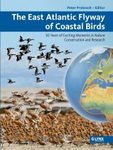Field / Identification Guide World / Checklist
By: Anthony B Rylands(Author), Russell A Mittermeier(Author), Jessica W Lynch(Author), Leandro Jerusalinsky(Author), Karen B Strier(Author), Liliana Cortés-Ortiz(Author), Andrés Link(Author), Stella de la Torre(Author), Fabiano R de Melo(Author), Gustavo R Canale(Author), Jean P Boubli(Author), Fanny M Cornejo(Author), Wes Sechrest(Author), Lluís Sogorb Mallebrera(Illustrator), Ilian Velikov(Illustrator), Francesc Jutglar(Illustrator), Bill Konstant(Foreword By)
141 pages, colour illustrations, colour distribution maps
![Neotropical Primates Neotropical Primates]()
Click to have a closer look
About this book
Customer reviews
Related titles
About this book
This guide describes and illustrates the species and subspecies of the primates of South America, Central America and Mexico. This region has the largest number of primate taxa of any of the major regions in which primates occur, a total of 217 species and subspecies in 24 genera and five families. With an easy-to-use format that is very handy for the field, this new book enables visitors to see at a glance which species are present in the 21 countries of the Neotropical region that have wild primate populations, and it gives pointers that will help in their identification.
Neotropical Primates covers all the primate species and subspecies that occur naturally in the Neotropics and three African species that have been introduced and are now feral on some of the Caribbean islands, including Barbados, St Kitts and Nevis, St Lucia, Grenada, Saint-Martin/Sint Maarten and Anguilla. Texts for each species include scientific names, common names in English, additional names in Portuguese and Spanish, as well as French for species occurring in French Guiana and Sranan Tongo for those in Suriname, conservation status according to the IUCN Red List of Threatened Species, the most relevant details about habitats and geographic distribution, brief descriptive notes, and, when available, altitudinal range. Each species account is accompanied by one or more illustrations and a distribution map.
To stimulate primate-watching and primate life-listing, a complete checklist is provided with the common names and countries where the different species occur for you to mark the primates you have seen for your own personal life list.
Customer Reviews
Field / Identification Guide World / Checklist
By: Anthony B Rylands(Author), Russell A Mittermeier(Author), Jessica W Lynch(Author), Leandro Jerusalinsky(Author), Karen B Strier(Author), Liliana Cortés-Ortiz(Author), Andrés Link(Author), Stella de la Torre(Author), Fabiano R de Melo(Author), Gustavo R Canale(Author), Jean P Boubli(Author), Fanny M Cornejo(Author), Wes Sechrest(Author), Lluís Sogorb Mallebrera(Illustrator), Ilian Velikov(Illustrator), Francesc Jutglar(Illustrator), Bill Konstant(Foreword By)
141 pages, colour illustrations, colour distribution maps







































